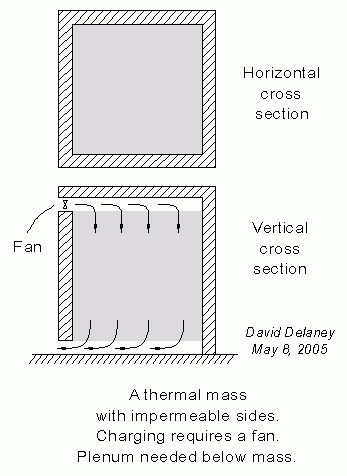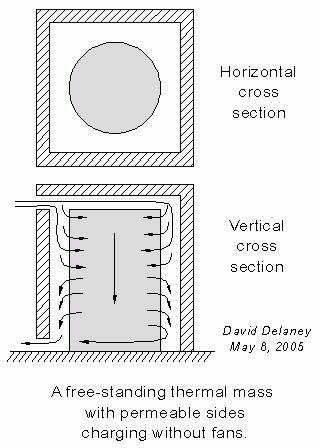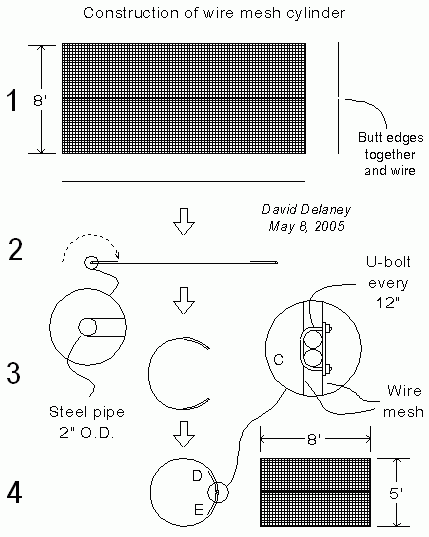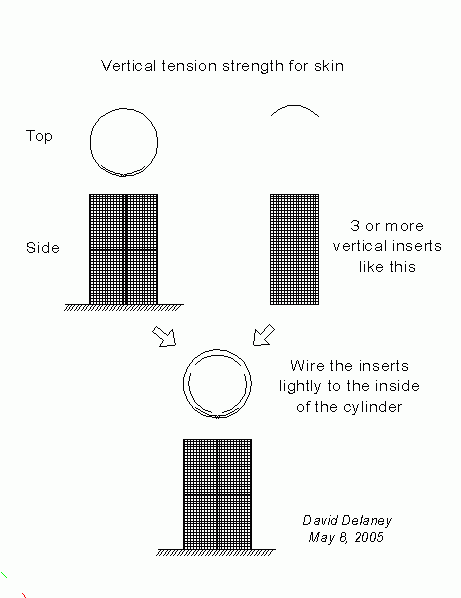Crushed stone packs too tightly, impeding air flow.
Diameter of stones is 38 mm to 68 mm. (1-1/2" to 2-1/2")
Volume of stones = 5 x 5 x (pi /4) x 8 = 157 ft3 = 4.45 m3
Void ratio = 0.4 (60% of the volume is solid stone).
Density of stone = 2400 kg/m3
Specific heat of stone = 880 J/kg.C
The thermal capacity of this column of stones is therefore
4.45 m3 x 0.6 x 2400 kg x 880 J/kg-C
= 5.64 MJ/C, or 2970 Btu/F
Wire mesh is supplied
economically in rolls up to 48" (1219 mm) wide. The following
instructions assume this format. The column shown above is 5 feet
(1542 mm) in diameter and 8 feet (2438 mm) high. Two 20' (6.1
m) lengths of 48" (1219 mm) wide wire mesh form the
compressive skin of the stone column.






